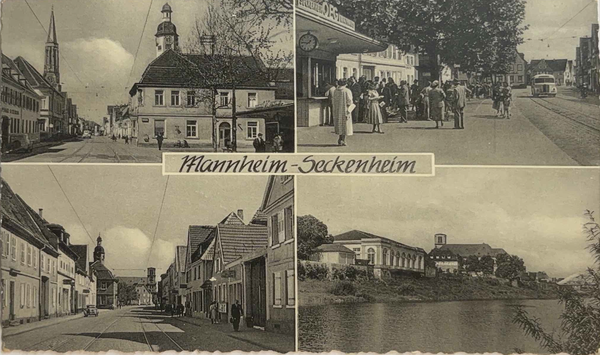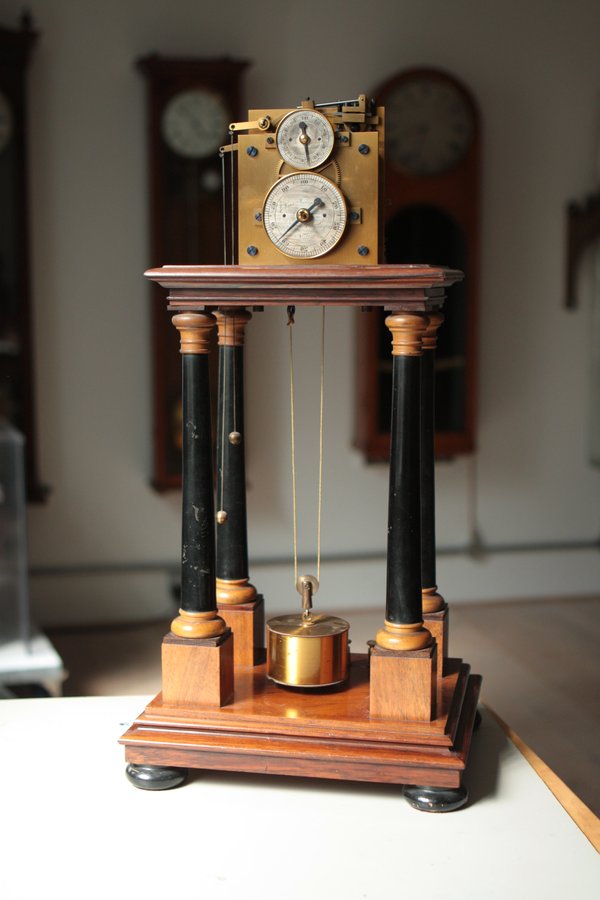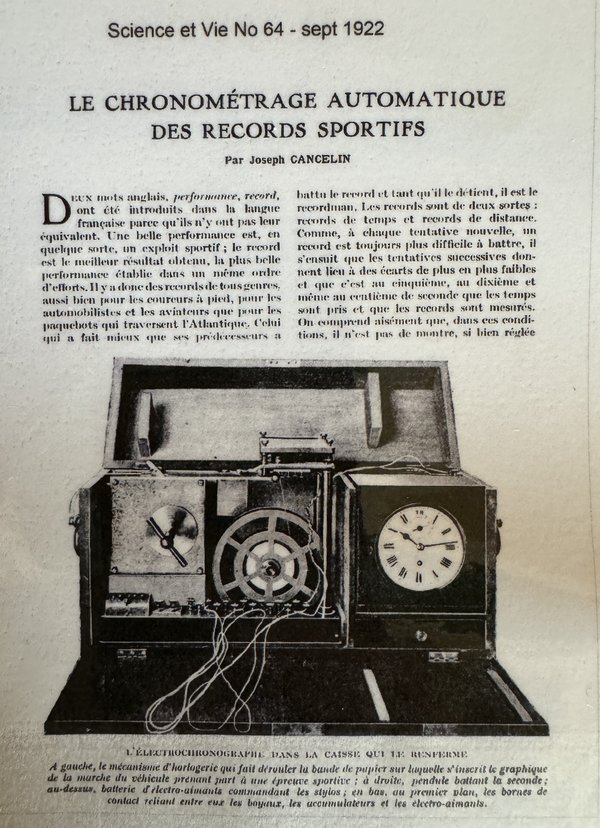A time for sport
This post was written by James Nye

Since 2000, people have gathered each year in Mannheim-Seckenheim (Germany) one Spring weekend, ostensibly for an electrical horology fair, which over time has developed into a strongly social affair; a chance for distant friends to catch-up. In addition, a tradition has emerged for a small exhibition. This is the brainchild of one the two main organisers, Dr Thomas Schraven, known to many for his intense interest in, and knowledge of, the field of short-time measurement.

His research started with an in-depth exploration of the Hipp chronoscope, capable of measuring to 1/000th of a second, and used across many sciences. Much later his research into companies such as Löbner, Hammer and Zimmerman brought the uniquely German tertienuhr into sharp focus – a less expensive but useful device capable of measurements of 1/100th second.

Beyond the academic fields of science, short-time measurement has always been to the fore in sport, where records are established and determining close results may require the use of precision timing equipment. These days, it is easy to imagine all manner of electronic means for detecting and recording events, but a century ago the technology involved simpler analogue mechanics: the breasting of a tape in a race, the compression of a pneumatic hose below the tyres of a car, and so forth.

This year, Thomas mounted an exhibition centred around ‘Electromechanical Timekeeping in Automobile Racing’, including some pieces not seen in public before, and with the loan of a remarkable timing instrument from Stefan Muser of Dr Crott auctioneers.


This was a racing chronograph made by Elliot Brothers from London, in its massive transport box. It belonged to the Automobile Club de France in 1922, and was featured in La Science et la Vie.

Other important timepieces were the chronograph by Henri Chaponnière, used in the 1924 Klausen Pass race, and the time-pressure registration chronograph by Löbner, as used in the record drives with Fritz von Opel's rocket car RAK 3.

This was a diverse exhibition. Off the automobile theme, and not expecting weaponry, we were momentarily surprised to see a modified 9mm Zoraki pistol coupled to a Hanhart stopwatch, and a most intriguing early twentieth century electric chronometer from d’Arsonval, with an accompanying image showing it in use, to test the reaction times of Great War French pilots.


In all, a remarkable assembly of items one might spend a lifetime struggling to find in museum reserve collections, but gathered for the occasion and the great enjoyment of all present. (All photos by James Nye except where stated).